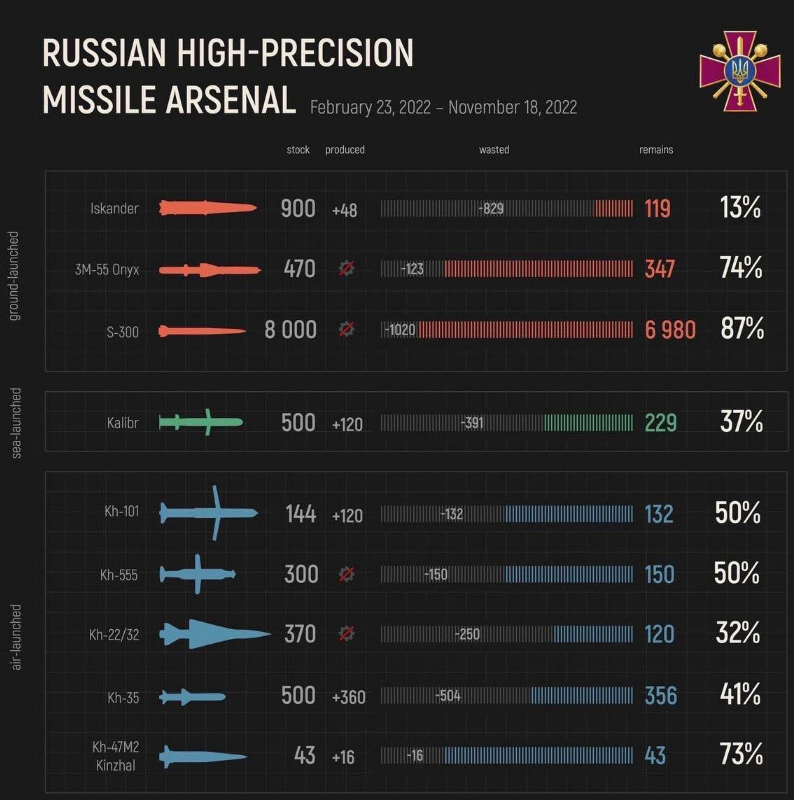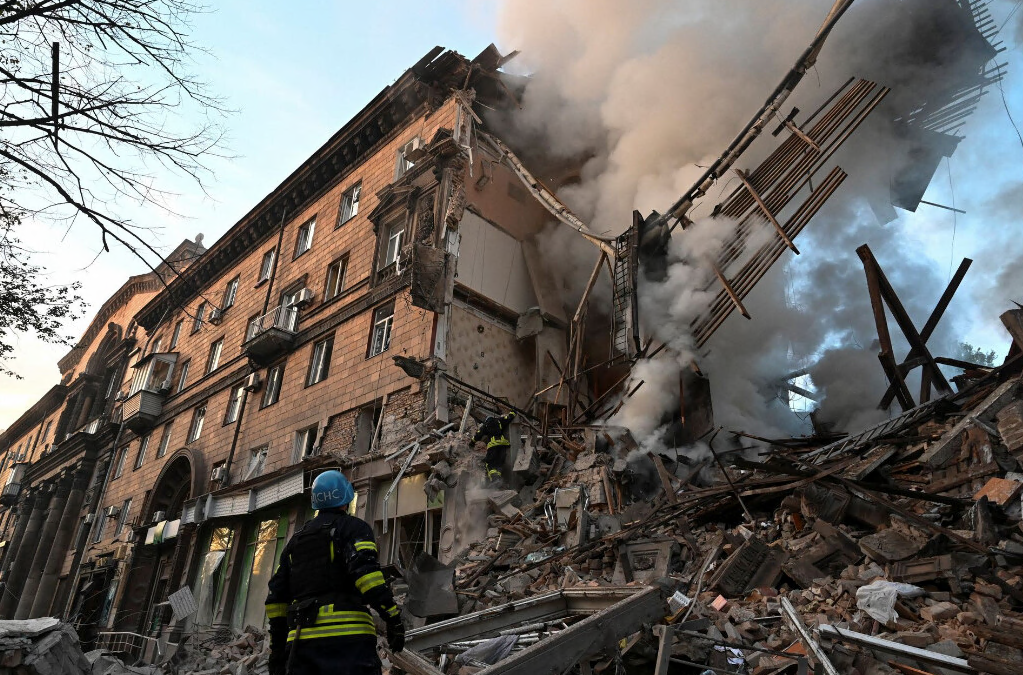
The Decline of Russia's Missile Stock
Data released on the numbers of missiles used by Russia during it's invasion of Ukraine along with data on those remaining, points towards an upcoming critical shortage that is likely to limit any Russian plans for any future offensive, and this could lead to Russia losing more territory to a Ukrainian forces.
In November, Ukraine's Defense Minister Oleksii Reznikov released data on Russian stocks of precision weapons and the amounts used during the first 9 months of the war. Calculating a monthly rate of expenditure from this data shows that Russia is likely to run out of its most high-precision weapons by Spring 2023 which will severely impact the chance of success of any Russian Spring offensive; this will mean that they will struggle to hold on to captured territory.
Below is a table which shows the data released and the calculated consumption rates and forecast expenditure of each munition:

The above figures are approximations and are calculated assuming that expenditure continues at the same rate as that seen during the first 9 months of the war. Rationing the use of ammunition would obviously extend the duration that remaining stocks will last for, this in itself will impact the ability of the Russians to effectively support their armed forces and would likely increase the attrition of troops and equipment as they suffer due to inadequate fire support.

Another sign that Russia's stock of precision missiles is running dangerously low is the repurposing of air defense and anti ship missiles into a ground attack role. These systems are ill-suited for use against ground targets, lacking the firepower and accuracy. The only real utility of repurposed weapons is for indiscriminate strikes against population centers, or for use as decoys when used alongside precision munitions; but crucially they will be of limited use against mobile military targets when trying to capture or defend territory.

Sources reported in late November that Russia was utilizing ageing cruise missiles stripped of their nuclear warheads also drawing the conclusion that stocks of conventional missiles were depleted. It was suspected that the nuclear warheads of the AS-15 Kent air-launched cruise missiles had been replaced with ballast. This again highlights the desperation of the Russian armed forces with the statement saying that “Although such an inert system will still produce some damage through the missile’s kinetic energy and any unspent fuel, it is unlikely to achieve reliable effects against intended targets". The less advanced these missiles are, the more the circular error probable (CEP) increases, meaning the less precise they become. Overall this will likely lead to more un-specific targets being struck by Russian kinetic strikes in the future as stocks wither away throughout the winter.